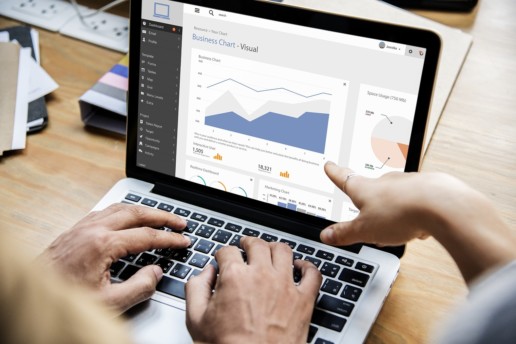E-Verify Is Down. What Do Employers Do Now?
Are you questioning what you should do now that E-Verify, the federal government's electronic employment verification system, has expired? Read this blog post from SHRM to learn more.
What are employers supposed to do now that E-Verify—the federal government's electronic employment verification system—has expired?
Funding and congressional authorization for the program ran out Dec. 22, 2018, as the government went into a partial shutdown after Congress and the White House could not agree on how to fund some agencies, including the U.S. Department of Homeland Security (DHS), which administers the system, for fiscal year 2019.
E-Verify compares information from an employee's Form I-9 to DHS and Social Security Administration (SSA) records to confirm employment eligibility. Employers enrolled in the program are required to use the system to run checks on new workers within three days of hiring them.
During the government shutdown, employers will not be able to enroll in E-Verify, initiate queries, access cases or resolve tentative non-confirmations (TNCs) with affected workers.
All employers remain subject to Form I-9 obligations, however. "Remember that the government shutdown has nothing to do with an employer's responsibilities to complete the Form I-9 [in a timely manner]," said Dawn Lurie, senior counsel in the Washington, D.C., office of Seyfarth Shaw. "Specifically, employees are required to complete Section 1 of the I-9 on or before the first day of employment, and employers must complete Section 2 of the I-9 no later than the third business day after an employee begins work for pay."
No Cause for Alarm
Lurie advised employers not to panic while E-Verify is down. "Employers will not be penalized as a result of the E-Verify operations shutdown," she said. "Employers will not be penalized for any delays in creating E-Verify cases. However, employers are reminded that they must continue to complete I-9s in compliance with the law, and when E-Verify becomes available, create cases in the system."
To minimize the burden on both employers and employees, DHS announced that:
- The three-day rule for creating E-Verify cases is suspended for cases affected by the unavailability of the service. "Normally, the employer enters information from the I-9 into E-Verify within three days of hire, but that won't be possible while the system is unavailable," said Montserrat Miller, a partner in the Atlanta office of Arnall Golden Gregory. "DHS will provide a window of time to submit those held cases once service resumes."
- The time period during which employees may resolve TNCs will be extended. The number of days E-Verify is unavailable will not count toward the days the employee has to begin the process of resolving a TNC. "Employers can't take any adverse action against a worker with a pending TNC regardless, shutdown or not," Miller said. Currently, an employee who chooses to contest a TNC must visit an SSA field office or call DHS within eight federal government working days to begin resolving it. This period will have to be extended because of the shutdown, she added.
- Additional guidance regarding the three-day rule and time period to resolve TNC deadlines will be provided once operations resume.
Amy Peck, an immigration attorney with Jackson Lewis in Omaha, Neb., advised employers to keep track of all new hires with completed I-9s for whom there are no E-Verify queries due to the shutdown. She also recommended attaching a memo in a master E-Verify file tracking the days that the program was unavailable. "I've seen the discrepancy come up years later during an audit," she said.
"Once the system is back up, work with counsel on how much time employees have to resolve their TNCs," Peck said. "Someone receiving a TNC the day before the shutdown is a different case than somebody who had 10 days to resolve their TNC when the shutdown occurred. Those circumstances should be considered on a case-by-case basis."
Federal contractors with a federal acquisition regulation E-Verify clause should contact their government contracting officers to extend deadlines. "Federal contractors have a particular concern because nobody is supposed to be working who has not been verified through the system," Peck said. "People can be hired, but whether they are allowed to work on the contract before being run through E-Verify is a critical consideration that should be discussed with counsel."
Prepare for the Resumption of Service
Miller said employers should monitor the shutdown. "When it is over, log in to the system and see what instructions there are for creating and submitting queries," she advised. "There is an obligation to create those queries if you are enrolled in the program, even if enrolled voluntarily."
The backlog created as a result of the shutdown might have a significant impact on employers that process many E-Verify cases and specifically on the HR staff and other team members in charge of the process.
"Not all employers will be able to push all their cases through at once when the shutdown ends," Miller said. "If everyone did that, the system would crash. DHS will provide instructions on how to submit queries. Employers will be asked why the query is being submitted after the required three days. In the past, 'Government Shutdown' was one of the options in the drop-down menu."
Peck reminded employers that the loss of E-Verify does not mean there is a prohibition against hiring. "Companies should continue to hire as they need," she said.
SOURCE: Maurer, R. (3 January 2019) "E-Verify Is Down. What Do Employers Do Now?" (Web Blog Post). Retrieved from https://www.shrm.org/ResourcesAndTools/hr-topics/talent-acquisition/Pages/EVerify-Outage-What-Do-Employers-HR-Do.aspx
New resource offers guidance on digital tools for diabetes management
The market for digital diabetes management tools is continuing to mature. Read this blog post for the Northeast Business Group on Health’s updated guide on diabetes management tools.
The Northeast Business Group on Health has updated its “Digital Tools and Solutions for Diabetes: An Employer’s Guide,” to include both enhanced and new solutions—and promising future innovations—to help employers help their workers better manage their diabetes, lower costs and ultimately save more lives.
“Employers are well aware of the costs associated with diabetes in their employee and dependent populations—they continue to indicate this is a top concern and are increasingly aware of the links between diabetes and other chronic and debilitating health conditions, including cardiovascular disease,” says Candice Sherman, CEO of NEBGH.
The market for digital diabetes prevention and management solutions continues to mature since the group published its first guide in 2016, Sherman says. The updated guide provides a detailed checklist of the features and functionalities of the digital tools available now to manage diabetes, as well as information on several unique and innovative digital diabetes solutions that are being targeted to employers but were not part of NEBGH’s research, including Proteus Discover, BlueLoop and do-it-yourself programs.
“Proteus Discover is comprised of ingestible sensors, a small wearable sensor patch, an application on a mobile device and a provider portal,” the guide cites the provider. “Once activated, Proteus Discover unlocks never-before-seen insight into patient health patterns and medication treatment effectiveness, leading to more informed healthcare decisions for everyone involved.”
“BlueLoop is the one and only tool that allows kids and their caregivers to log and share diabetes information—both online and with the app—in real time, via instant e-mail and text message, giving peace of mind to parents,more class time for students and fewer phone calls and paper logs for school nurses,” the provider tells NEBGH. “Online, parents can share real-time BG logs with their clinicians, who can see logs (in the format they prefer), current dosages and reports, all in one place.”
The guide also hints at promising future innovations:
“Technology is constantly evolving: by connecting sensors, wearables and apps, it is increasingly possible to pool and leverage data in innovative ways to provide timely interventions so that people with diabetes can be truly independent and effectively self-manage their care,” the authors write.
The guide lists a hypothetical scenario: A person with diabetes enters a restaurant where a GPS sensor identifies the location, reviews the menu and proposes the best choices based on caloric and carbohydrate content. The technology also proposes and delivers a rapidly acting insulin bolus dose based on the person’s exercise level that day and prior experiences when eating similar meals.
Also included are key questions for employers considering implementing digital diabetes tools or solutions, including:
- What does the company want to achieve with a digital tool?
- How much is the company willing to pay?
- How will success be measured?
- How will digital solutions and tools be marketed to employees and their families?
- What privacy issues need to be addressed when tools or solutions are implemented?
“Digital health tools hold the promise of improved health outcomes and reduced health care expenses through improved engagement, better collaboration and sustained behavior change,” says Mark Cunningham-Hill, NEBGH’s medical director. “However, digital diabetes solutions are not a panacea. Employers will need to address several obstacles such as the difficulty of recruitment and enrollment, lack of sustained employee engagement and the cost of deployment of digital solutions. This can be accomplished through careful planning and learning from other employers that have successfully implemented these tools.”
SOURCE: Kuehner-Hebert, K. (4 December 2018) "New resource offers guidance on digital tools for diabetes management" (Web Blog Post). Retrieved from https://www.benefitspro.com/2018/12/04/new-resource-digital-tools-for-diabetes-management/
Creating Better Employee Benefits With Advanced Analytics
It is important to provide a workplace, employee benefits and payment system that keep your employees happy. Read this blog post to learn how you can create better employee benefits with advanced analytics.
Job satisfaction is the most important part of maintaining a happy workforce. If you have a workforce that feels like they could get a better deal elsewhere then they are likely to leave.
It is therefore important to provide a working environment, benefits and payment system, that keeps your employees happy without breaking the bank.
Analytics are being used to make sure that this is being done effectively, seeing where discontent is occurring and helping to suggest how this can be solved.
For instance, there are research companies that can use text analysis tools to analyze hundreds, if not thousands of survey entries that can give a holistic view of employee benefits. Often when survey results are being analyzed by an individual, it is difficult to gauge the overall feeling and there can be bias put on the results.
It also allows for HR to note the frequency of meetings with individuals as well as the frequency and size of any pay rises. If it is flagged that somebody hasn’t had a meeting with HR where they can directly communicate any concerns for a considerable amount of time, then tho scan be rectified.
Analytics can also be used to investigate which teams are happiest, have the highest retention rates or are the most profitable. This then allows companies to investigate in detail what is making these teams happiest or most productive, then create benefit packages to create similar results for other teams in the company.
Analytics and data have allowed companies to collect data to make their workforces happier and more content. This, in turn, creates situations where employees are eager to work and appreciative of the benefits they receive, improving ROI and increasing productivity.
SOURCE: Pannaman, E. (12 October 2018) "Creating Better Employee Benefits With Advanced Analytics" (Web Blog Post). Retrieved from https://channels.theinnovationenterprise.com/articles/202-creating-better-employee-benefits-with-advanced-analytics
Predictive Analytics Will Be The Silent Game-Changer In Employee Benefits
Employers can now use their own data to help fine-tune their employer-sponsored benefits packages. Continue reading to learn how this technology could be used to help fine-tune employee benefits offerings.
Last year’s World Series between the Houston Astros and the Los Angeles Dodgers came down to a seven-game battle based not only on talent, athleticism and coaching but also on data. Just as Sports Illustrated suggested back in 2014 via predictive data, the Astros were the victors.
The publication of Moneyball: The Art of Winning an Unfair Game spurred not only Major League Baseball teams to deploy predictive analytics, but also businesses to take a harder look at what their data means. It's no longer part of the hype cycle: Statista forecasts (paywall) that the predictive analytics market worldwide will reach $6.2 billion in 2018 and $10.95 billion in 2022.
I believe we are also at a transformational point in improving corporate employee benefits and our employees’ lives by embracing predictive analytics. HR is swimming in rich data. Instead of guesstimating needs across multiple generations of employees, employers can turn to their own data to fine-tune what they are offering as benefits solutions. Companies spend 25-40% of an employee’s salary on benefits. It simply makes strategic and financial sense to get it right.
Bring Employee Benefits Out Of The Dark Ages
Hiring and retaining great talent is at the very soul of almost every company’s strategy. Not surprisingly, more companies have turned to predictive analytics to give them a leg up in recruitment. However, HR benefits have lagged behind. As John Greenwood reported to Corporate Adviser, “More than half of reward and employee benefits professionals see predictive analytics as a game-changer, but 90 percent are still using spreadsheets to manage data, research from the Reward & Employee Benefits Association shows.”
One reason for benefits lagging behind recruitment in adopting predictive analytics is that the way companies choose new benefits varies greatly from business to business. Given that the majority of HR departments keep data in disparate spreadsheets, even if some HR departments conduct employee surveys or historical cost analyses, they often do not integrate the data about their workforce. If a new benefit offering is chosen based on a needs analysis, only some know the “why” behind a request from the workforce. Knowing how many employees are logging into a benefits platform is helpful; market standard benefit utilization reports provide this level of information. Yet they do not give insight into the underlying reason for an employee to utilize a benefit. The user of deeper analytics is required to look deeper into employees' behavior.
We have found firsthand that many HR departments do not have a full understanding of how their employees are utilizing their benefits across the entire offering suite. A one-size-fits-all or a one-off strategy no longer is effective. Companies must understand not only their employees’ needs but also the underlying data related to these needs to provide a valuable benefits offering.
Put Your Existing Data To Use
For the past five years, I have watched our clients glean valuable insights into what the real underlying issues are for their employees and what must be done to address these pressing needs. I also have been watching companies realize that what they thought were the core problems at hand sometimes were not.
For example, one of our national high-tech clients, with over 50,000 benefit-eligible employees, believed that a high number of their employees had children struggling with autism. This belief was initially based on input from some of their employees. After approximately 16 months, the client reviewed the masked utilization data from their benefit platform. The data illustrated that the overwhelming majority of employee families (tenfold) in fact faced challenges associated with youth anxiety, a concern that had never been expressed to HR previously. Once they reviewed what employees were doing within our platform, their results mirrored the National Institute of Mental Health’s report that approximately 31.9% of U.S. children ages 13-18 struggle with anxiety disorders.
Their own data helped them understand much more specifically where their employees’ stress lay, and their HR department was able to focus communications around it.
Getting Started
Mining and viewing use data across all benefits is ideal. This enables an employer to determine if the benefit suite is serving employees effectively. We have found that as quickly as year over year, users' behaviors shift. If a company solely chooses a benefit based on what they saw as most heavily utilized the previous year, they are not being strategic.
For that reason, HR should utilize past and current data to better predict future patterns of need for a truly strategic approach to benefit choice. With this insight, they can make better choices and serve their workforce more effectively.
Given the limitations across many employee benefit vendors today, to start initially:
1. Embrace KPIs. Agree upon them internally, and measure benefit vendors on them.
2. Work with your current vendors to determine what data they provide to support your internal analysis. Ensure you have access to all the data you need, and if not, consider a vendor change.
3. Hold possible new vendors to similar data standards, and create a transparent relationship from the start.
4. Collect current and historical data. Existing vendors can provide this history, so make sure to collect at least 2-3 years of information.
These analytics need to go deeper than basic demographics to show patterns of activity. In order to understand the benefit needs of your workforce, you'll want to analyze trends across multiple data sets: medical, pharmacy, worker's compensation, biometric screenings, utilization patterns, FMLA requests and demographic trends. From there, you can start to pinpoint what your employees need -- and the “whys” behind the needs -- in order to make a measurable impact.
While predictive analytics is still in the nascent phase in the benefits and vendor worlds, the easiest and most proactive thing any employer can do is to focus on other insights vendors can provide related to the workforce and benefit use beyond simple utilization. In doing so, you will be able to support your employees both in their work lives and their personal lives by providing them with the benefits they need to be at their best.
SOURCE: Goldberg, A. (2 October 2018) "Predictive Analytics Will Be The Silent Game-Changer In Employee Benefits" (Web Blog Post). Retrieved from: https://www.forbes.com/sites/forbestechcouncil/2018/10/02/predictive-analytics-will-be-the-silent-game-changer-in-employee-benefits/#26648166e182
How data science can help employers build better benefit plans
New approaches to data science are now allowing companies to have many different definitions of data and have them all coded. Read on to learn how data science can help you build a better benefits plan.
Is your data management system overdue for an overhaul? Benefit plan sponsors don’t need to feel stuck with old systems requiring hours of manual data entry, according to Marc Rind, chief data scientist for ADP.
“I’ve been in data for a long time,” he says. “For generations, the traditional data management approach has been people having to standardize data.”
But people in different companies — even different departments of the same company – could have different definitions and means of data. An organization’s governance team would have to come up with one definition for everyone to adhere to.
With new approaches to data science, Rind says, “you’re able to have many different definitions of your data and have them all coded. It’s not about governing the definition of data but more about enhancing and publishing that data.”
With data science, employers and those in HR can see trends much more easily using automated mapping and search capabilities. This will allow them to see trends over time, like what people are choosing for their benefit plans and how benefits impact employee productivity and engagement.
“It builds context around the data,” Rind says. “For employers, they have to not only understand which benefit offerings they have to offer to employees but the effect on retention. They can also see what similar employers are offering and if they are getting higher retention rates.”
Employees can use the data to see what benefits others with similar backgrounds have chosen to get, helping them decide what their perfect healthcare plan looks like. However, they cannot yet see how satisfied people similar to them were with these benefits. Rind says that this feedback loop is important, and will become more prominent for the next generation of data science systems.
SOURCE: Spiezio, C. (16 June 2016) "How data science can help employers build better benefit plans" (Web Blog Post). Retrieved from https://www.benefitnews.com/news/how-data-science-can-help-employers-build-better-benefit-plans
Why employee performance management needs an HR tech overhaul
Are annual performance reviews necessary? A recent survey by Adobe reveals that 58 percent of people feel that performance reviews are not necessary. Continue reading to learn more.
According to a recent survey conducted by Adobe, 58% of people feel that performance reviews “are a needless HR requirement.” Adobe, in fact, no longer has an annual performance review process and instead has adopted an approach involving ongoing discussions between managers and employees that emphasize talent development and future productivity instead of formal ratings and rankings based on past performance.
Still, the vast majority of companies continue to persist with a backward-looking evaluation process that is time-consuming for managers, demotivating for employees and of negligible benefit to the business as a whole. They do this because, as Adobe’s survey respondents suspected, performance reviews are more about “compliance than customer service.”
Focusing on past performance is an industrial-era hangover from when employees were mainly required to hit targets in easily measurable, repetitive tasks. Although most people’s jobs have evolved to be more complex and creative since then, the process and the tools used to manage their efficacy and performance in those roles have not.
In many respects, HR is still a defensive function whose role is to protect the business from its own employees. This is reflected by HR technology that is built for compliance, rather than helping managers and employees become more productive.
HR’s on-premise or enterprise resource planning systems can track performance reviews to prove a dismissal was not unfair, rank employees to justify compensation distribution and demonstrate effective people management to the board or shareholders. What they can’t do is react positively to the ever-changing demands of the modern business world and help employees and managers meaningfully improve their skills to meet the challenges of tomorrow.
Performance management is changing — but HR tech is not
These days, a company’s and individual employee’s goals can change dramatically in the time between end-of-year reviews. Individual roles are more specialized and require frequent skill updates, while cross-functional teams have long since replaced the siloed departments that were standard just 10 years ago. In this environment, HR’s focus on past compliance is detrimental to future development.
Forward-thinking companies are changing the performance process to focus on development and continuous feedback that makes managers and employees more productive and engaged. The success of these trailblazers will encourage other businesses from a wide range of industries to follow suit.
This new model of performance management needs help from technology, but existing HR tech vendors are not keeping up. Their services are so embedded in the world of compliance, they cannot change to support the development needs of managers and employees. Fortunately, the solution already exists.
Creating a connected system of productivity
One of the key issues with performance reviews is that so much of the process involves looking back to gather the data. For managers, it is a huge time investment. For employees, end-of-year feedback about an issue that occurred months beforehand is too late to be useful.
The process seems doubly inefficient when you realize that real-time, instantly-actionable performance data is already available in productivity systems like JIRA and Salesforce that are used by different teams. The problem is HR’s defensive mindset has made it difficult to integrate existing internal or ERP systems with these tools.
Dedicated performance management services that connect to both HR systems and the departmental productivity tools can take HR technology out of its silo. This will create a connected system of productivity that uses real-time data alongside transparent and flexible goal-tracking to drive ongoing development conversations between managers and employees.
It’s time for HR to evolve from a defensive function to make a positive contribution to key business goals and become what HR analyst Josh Bersin calls the “chief of productivity.” This demands a shift from a performance review process based on compliance to a human-centered, development-focused experience.
Adopting new performance technology that integrates with widely-used productivity tools is a key step to ensuring everyone from employees to managers to HR can work on what matters most in order to meet today’s goals and tomorrow’s challenges.
SOURCE: Dennerline, D. (15 October 2018) "Why employee performance management needs an HR tech overhaul" (Web Blog Post). Retrieved from https://www.benefitnews.com/opinion/why-employee-performance-management-needs-an-hr-tech-overhaul?brief=00000152-14a7-d1cc-a5fa-7cffccf00000
5 ways employers can leverage tech during open enrollment
Are you leveraging technology advancements during open enrollment? Advances in technology are creating a more seamless and interactive healthcare experience for employees. Read on for five ways employers can leverage technology during 2019 open enrollment.
Technology continues to reshape how employers select and offer healthcare benefits to employees, putting access to information at our fingertips and creating a more seamless and interactive healthcare experience. At the same time, these advances may help employees become savvier users of healthcare, helping simplify and personalize their journey toward health and, in the process, help curb costs for employers.
The revolution can be important to remember during open enrollment, which occurs during the fall when millions of Americans select or switch their health benefits for 2019. With that in mind, here are five tips employers should be aware of during open enrollment and year-round.
Make sense of big data
Help people understand their options
Encourage your people to move more
Offer incentives to employees who comparison shop for care
Integrate medical and ancillary benefits
Personalizing health plans with technology
Technology offers advanced opportunities to make your health plan customized to your employees. Check out this article from Employee Benefit Advisor by Cort Olsen for more information.
Many advisers are using digital monitoring to evaluate the status of wellbeing within a given employer’s employee population.
Craig Schmidt, senior wellness consultant for EPIC, says one of the ways he is able to identify the companies that are offering strong digital wellness plans is through their ability to integrate such programs with claims data. He utilizes a push style notification to a mobile device to inform individual employees about specific plans that can coordinate well with their conditions as a further enhancement.
Samantha Gardiner, director of product management at Health Advocate, says her company has combined wellness, chronic condition management and client outreach all into one program to improve the health of employees and reduce claims and pharmaceutical costs for employer-provided health plans.
“We take the data and provide alerts via our website, email or mobile push notifications to keep employees informed about their personal health conditions,” Gardiner says. “If we have the data, we can really target and personalize the program toward company goals and members’ personal goals.”

In order to identify the best in class among the programs offered by wellness providers, Schmidt says he looks at the number and quality of interfaces and outcomes from the program as well as success stories that employees can share that can flesh out an employer’s return on investment.
“We can look at results six months or even a year after an employee has participated in the program to see if behavior changes have taken place,” Schmidt says. “If the plan integrates and reacts to the systems the employer has in place for his or her employees, then we will know if the program is a right match.”
Integration
Monica Majors, vice president of marketing and communications of health plan products at Sutter Health, says a digital wellness program needs to integrate with a multitude of personal devices.
“The site must be responsive to all technology, such as a mobile device, a tablet, or for those who are deskbound, from their computer,” Majors says. “The flexibility of offering individual trackers as well as key based activity challenges through a wide range of activities will keep retention.”
The program can then offer a health assessment that can be aggregated into an overall employer report, which can then serve as a basis for customization for that specific workforce.
Marcia Otto, vice president of product strategy at Health Advocate, says her company offers biometric screenings that can be done onsite, which can then factor into an employee’s health risk assessment to further customize the personal health program.
“If we get biometric data from our biometric data collection or if the employee sends us the data from a third party, that is another data source we can look at to determine if they need further attention for diabetes, hyper tension or so on,” Otto says. “We can also collect data on what their last blood test reported, right down to how many fruits or vegetables they eat, which is then prioritized based on how sick the employee is.”
Incentivizing
To influence employees to remain on the wellness plan, employers have offered incentives. These incentives can range from gift cards and cash rewards to funding a HSA or a HRA.
Paul Sterling, vice president of emerging products at UnitedHealthcare, says users who are enrolled in the UnitedHealthcare Motion program – an app programmed to encourage employees to remain active throughout the workday using a smart phone or smart watch – rewards employees by funding money into an HSA or HRA as a way to retain users.
“We have three daily walking objectives through our FIT criteria – frequency, intensity and tenacity – that each of our members try to achieve,” Sterling says. “Each one of those objectives is tied to or associated with an incentive amount.”
For each objective the employee completes, UnitedHealthcare deposits $1 into the user’s HSA or HRA, depending what they have.
Each day, the employee can complete each of the objectives. It resets daily, allowing the employee to continue to receive up to $3 per day.
Over the course of one year, Sterling says participation in the Motion program has held at a steady 67%. “If you think about other products in the health and wellness space, that’s arguably 10 times the level of engagement achieved over that period of time others would achieve,” Sterling says.
While Gardiner says she cannot pin point the number of employees engaged in her program for an extended period of time yet, she thinks incentives do drive continued engagement for some employees who need the extra push to be active or engage in a healthier lifestyle.
“An incentive program that provides at least a $300 incentive to participate is where we see our most engagement,” Gardiner says. “It all depends on the goals of the employer.”
Read more.
SOURCE: Olsen C. (4 February 2018). "Personalizing health plans with technology" [Web Blog Post]. Retrieved from address https://www.employeebenefitadviser.com/news/personalizing-health-plans-with-technology?feed=00000152-175f-d933-a573-ff5f3f230000
SaveSave
SaveSave
Employers using fast-feedback apps to measure worker satisfaction, engagement
In this article from Employee Benefit Advisors, we take a look at measuring worker satisfaction and engagement through the use of feedback applications. Let us know what your verdict is!
The days of employers conducting employee engagement surveys once every year might be coming to an end.
Thanks to “fast feedback” applications, employers can conduct quick online surveys of their employees to measure how engaged they are at their jobs. The data from these polls is then collated and presented, often in real time on dashboards, to employers to show their workforce’s level of engagement and satisfaction. Some of these web-based programs also can present CEOs with steps they can take to improve their environment and culture.
These tools are available from Culture Amp, Glint, TINYpulse, PeakOn and others.
One of the main benefits of fast feedback, according to Glint CEO Jim Barnett, is that it cuts down on “regrettable attrition,” which occurs when talented employees leave for better jobs.
Glint customers include eBay, Glassdoor, Intuit, LinkedIn and Sky Broadcasting. These clients send out e-mail invitations to workers and ask them to take a voluntary survey, which can feature either stock employee engagement questions or queries that can be fine-tuned for a specific workplace.

Glint recommends 10 to 20 questions per Pulse — what it calls employee engagement survey sessions — and results are sent back to the employer’s HR directors and senior executives. According to Barnett, the Pulses are confidential but not anonymous. Barnett explains that while anonymous surveys do not record the respondent’s name and job title, a confidential survey means that only Glint knows who took the Pulse. The employer is only presented data from specific job groups or job descriptors within an enterprise, such as a production team or IT support.
This month, Glint announced two new capabilities to its real-time employee feedback program, called Always-On and On-Demand Surveys. Always-On allows workers to express their concerns at any time and On-Demand Surveys gives managers and executives the opportunity to perform quick, ad hoc surveys of staffers.
“Some of our companies use the Always-On Survey if they want people on their team to give feedback at any time on a particular topic,” he says.
Firms also use fast feedback for onboarding new hires, Barnett says. Companies have set up Glint’s program to gauge new workers at their 30 and 60 day-mark of their employment to “see how that onboarding experience impacted their engagement,” he says.
Culture Amp also provides fast feedback tools via a library of survey templates that cover a range of employee feedback topics including diversity and inclusion, manager effectiveness, wellness and exit interviews. Culture Amp’s clients include Aligned Leisure, Box, Etsy, McDonalds, Adobe and Yelp.
“We encourage customers to customize surveys to make the language more relevant, and to ensure every question reflects something the company is willing to act on,” says Culture Amp CEO Didier Elzinga.
Culture Amp presents its survey results to employers via a dashboard that displays the top drivers of employee engagement in real time. “Users can then drill down to understand more about each question, including how participants responded across a range of different demographic factors,” Elzinga says.
Sometimes CEOs are presented with news they were not prepared to hear, according to Elzinga. Some customers take to the employee survey process with the mindset of ‘myth busting,’ he says. “They want to know if some truth they hold dear is actually just a story they’ve been telling themselves. Every now and then, an employee survey will provide surprising results to an HR or executive team,” he says. “Whether people go into a survey looking to bust myths or gather baseline data, the important part is being open to accepting the results.”
Glassdoor takes the pulse of its workforce
Glint customer Glassdoor, the online job recruitment site that also allows visitors to anonymously rate their current employer’s work environment, compensation and culture, not only urges its employees to rate the firm using its own tools, the company also uses Glint’s software to view employee engagement at a more granular level.
Glassdoor conducted its first Glint Pulse in October 2016 and has rolled out three since then. The next is scheduled for January 2018, according to Marca Clarke, director of learning and organizational development at Glassdoor.
“We looked at employee engagement and the things that drive discretionary effort [among employees who work harder],” Clarke says. “This is strongly correlated with retention as well.”
Clarke said that one Glint Pulse found that the employees’ view of Glassdoor culture varied from location to location. Of its 700-person workforce, people working in the newer satellite offices were happier than the employees in its Mill Valley, Calif., headquarters. She speculates that this response could be due to newer, more eager employees hired in brand new, recently opened offices.
“People think culture is monolithic that should be felt across the company but we could see that there was some variation from office to office. With Glint, we were able to slice the data not just by region and job function but [we could] go to the manager level to look at how people with different performance ratings think about the culture,” she says.
Recent research from Aon Hewitt found that a 5% increase in employee engagement is linked to a 3% lift in revenue a year later. According to Barnett, Glint clients that regularly conduct surveys and take steps to engage their employees often see a boost in the price of their company shares.
“Companies in the top quartile of Glint scores last year [saw] their stock outperform the other companies by 40%,” he says. “They now have the data and can see that employee engagement and the overall employee experience really do you have a dramatic impact on the result of their company.”
Read the original article.
Source:
Albinus P. (5 December 2017). "Employers using fast-feedback apps to measure worker satisfaction, engagement" [Web blog post]. Retrieved from address https://www.employeebenefitadviser.com/news/employers-using-fast-feedback-apps-to-measure-worker-satisfaction-engagement?brief=00000152-1443-d1cc-a5fa-7cfba3c60000
SaveSave
9 things to leave off your LinkedIn
In our rapid-fire digital age, the Internet has completely revamped the way we traditionally look at recruiting. Resumes are sent as PDFs, online portfolios reign supreme, and LinkedIn has become the new Facebook for recruiters in every industry.
Wondering what you shouldn’t include on your LinkedIn profile in order to appear as marketable as possible to potential employers? Read on to find out.
1. Job titles that don’t say what you really do
When trying to describe your previous positions, it works to your advantage to be as precise as possible. That way, recruiters know exactly what your skillset is, and how it might fit into their company.
2. Your age
Unfortunately, some people have reservations hiring someone they think is either too young or too old. Don’t get knocked out of the running for a job by including school graduation years or other age identifiers.
3. Bad spelling, punctuation, and grammar
When writing up descriptions of your responsibilities in each job, take care to avoid punctuation, grammar, or spelling mistakes. Look at it as a test of your writing and communication abilities—highlighted for everyone to see.
4. A goofy profile photo
Unfortunately, some people don’t seem to realize that LinkedIn is not the place to put a goofy or odd profile photo—unless you’re looking for a job at the local comedy club. Spend a little money on getting a quality headshot that will impress those who see it, not make them wonder if you’re a serious candidate.
5. References from previous positions
There’s no reason to include references with phone numbers or contact information on your LinkedIn page. If an employer is really interested in hiring you, they’ll contact you for them directly. However, do encourage people you’ve worked with or for to leave recommendations for you on your LinkedIn profile page. They can really make you stand out from other candidates.
6. Salary or pay
One of the most unprofessional things you can do is include your salary for each position you held at various companies on your LinkedIn profile page. Unless you’re asked, it doesn’t make sense to disclose such personal information on such a public platform.
7. High school jobs
Unless you just graduated from high school, then jobs you had in high school (or earlier!) don’t belong on your professional LinkedIn page. While you may have enjoyed your summer job flipping burgers or mowing lawns, it’s not going to make much of an impression on someone who’s doing the hiring for a position with much greater responsibilities. It’s much better to put your best foot forward by showcasing standout roles in more recent jobs.
8. Personal information
Refrain from adding information about your ethnicity, religious affiliation, political party, or other potentially sensitive or controversial information. Regardless of how open-minded your recruiter may be, saying less is definitely safer than saying too much when you don’t know your audience.
9. Unprofessional posts or memes
Don’t forget that your LinkedIn profile and any posts you make on LinkedIn are potentially going to be viewed by the very person who is going to interview you for your dream job. What do your posts say about you? What about those funny memes (silly cat photos and so forth) that everyone seems to be passing around today? Will they make the interviewer even more excited to make you a job offer, or stay far away?
Read the original article.
Source:
Economy P. (4 December 2017). "9 things to leave off your LinkedIn" [web blog post]. Retrieved from address https://workwell.unum.com/2017/12/9-things-to-leave-off-your-linkedin/









